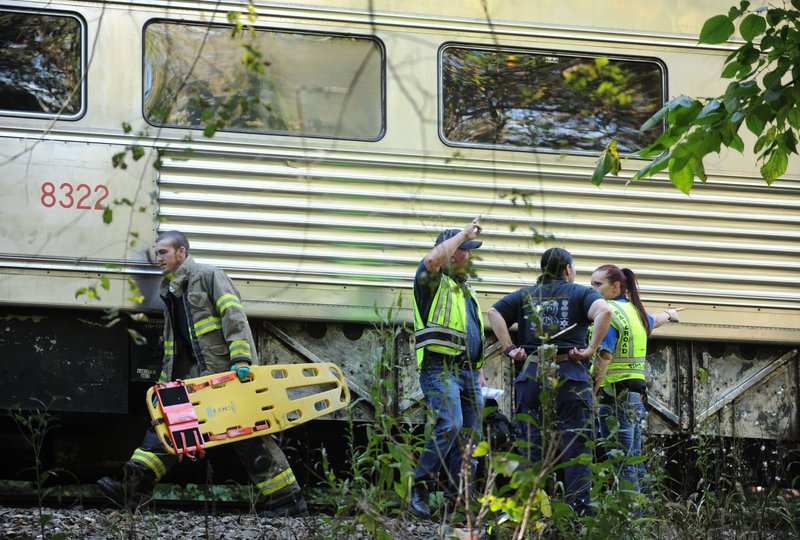FAYETTEVILLE -- A former employee says poor and unsafe working conditions at the Arkansas and Missouri Railroad led to a 2014 train wreck that left him injured, according to a federal lawsuit.
Kevin Buehne, a former engineer, filed his legal complaint Monday in U.S. District Court.
On Oct. 16, 2014, the passenger train was traveling on its scheduled excursion route from Springdale to Van Buren when it stalled on the tracks 3 miles south of West Fork in Washington County. A rescue train sent to assist it slammed into the stalled one, according to reports.
The lawsuit claims that the railroad company was negligent.
"There were a variety of things [A&M] just didn't get right," said Steven Groves, Buehne's attorney.
According to the lawsuit, Buehne suffered head and knee injuries and has post-traumatic stress disorder.
Ron Sparks, the company's spokesman, said Wednesday that he had no comment about the lawsuit.
The company has not yet been served with the lawsuit, Groves said.
Buehne was the engineer on the rescue train that hit the stalled passenger train head-on. All 39 passengers and four members of the crew from the two trains were taken to hospitals. The injuries were described at the time as not life-threatening.
The rails were covered with leaves and slick, which caused the passenger train to stall and kept the rescue train from stopping, according to a National Transportation Safety Board report released last month.
Other factors contributing to the wreck included patchy communications, violation of safety regulations and a partly bypassed system for automatically spreading sand on the rails in low-traction situations, according to the report.
Also, the work train was traveling too fast, the report says.
The company did not give employees enough rest, didn't properly dispatch trains and failed to provide "necessary sight distance for safe operation of locomotives," according to the lawsuit. One of the trains also did not have a "properly functioning braking system," and both trains did not have "properly working radios," the lawsuit says.
Sparks said last month that the railroad company has implemented changes since the wreck. It has added a second locomotive to all sightseeing trains to increase power, revised qualifications for working on and operating locomotives, put in new record-keeping to track crew hours, rewritten rules for dispatchers and tightened procedures for assisting stalled trains.
The company also is improving its radio system, Sparks said.
Metro on 07/15/2017
